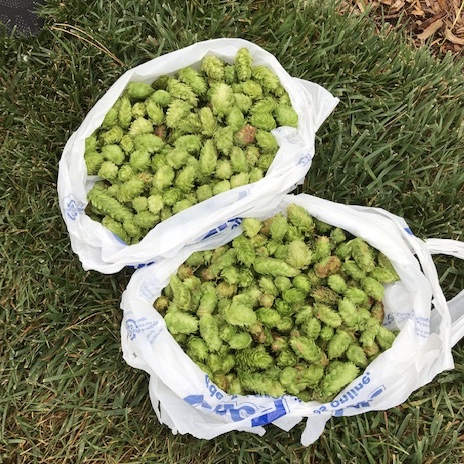Harvesting Hops
Master Gardeners were on hand at the Demo Garden recently to help harvest our hops with Jacob and Pippin from Sand Hills Brewery.
Hops are twining perennial bines. The long stems of the common hop are considered bines, not vines. What's the difference? Unlike vines that use tendrils and other means to climb, bines climb with the help of short, stiff hairs along the stems. They grow from rhizomes, which are underground stems that produce the roots and shoots.
Planted by Jack and Allen, the hops were started in the Demo Garden from four bare-root rhizomes and have taken about three or four years to establish themselves. At full maturity they can grow up to 18 feet tall. The hops cones were hand-picked from our bines that now cover two trellises.
The hops flowering plants come in male or female and only the female produces the cones for use as hops.
Hops cones are harvested for lupulin, a yellow powder clinging to their leaves. Lupulin contains many of the hop acids and essential oils that play a large part in giving the plant its characteristic scents and flavors. The plant matter from the hop cone itself is usually discarded.
Hops are examined by Julia, Pippin and Allen.
Our hops bines produced two bags of cones, unfortunately not quite enough for an entire brewing batch. After another harvest in about a week, they will be supplemented with additional hops and made into Sand Hills Harvest Ale. Once all ingredients are added, the brew is “steeped” (like tea) for about two weeks. Pippin has promised to let us know when the ale is ready to drink.
Skol!









Comments
Post a Comment